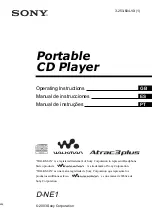
Volume 1, Part 1: Introduction to the Intel
®
Itanium
®
Architecture
1:15
The
jmpe
and
br.ia
instructions provide a low overhead mechanism to transfer control
between the instruction sets. These instructions are typically incorporated into “thunks”
or “stubs” that implement the required call linkage and calling conventions to call
dynamic or statically linked libraries. See
Section 6.2.1, “Instruction Set Modes”
additional details.
2.3
Intel
®
Itanium
®
Instruction Set Features
Itanium architecture incorporates features which enable high sustained performance
and remove barriers to further performance increases. The Itanium architecture is
based on the following principles:
• Explicit parallelism
• Mechanisms for synergy between the compiler and the processor
• Massive resources to take advantage of instruction level parallelism
• 128 integer and floating-point registers, 64 1-bit predicate registers, 8 branch
registers
• Support for many execution units and memory ports
• Features that enhance instruction level parallelism
• Speculation (which minimizes memory latency impact).
• Predication (which removes branches).
• Software pipelining of loops with low overhead
• Branch prediction to minimize the cost of branches
• Focused enhancements for improved software performance
• Special support for software modularity
• High performance floating-point architecture
• Specific multimedia instructions
The following sections highlight these important features of the Itanium architecture.
2.4
Instruction Level Parallelism
Instruction Level Parallelism (ILP) is the ability to execute multiple instructions at the
same time. The Itanium architecture allows issuing of independent instructions in
bundles (three instructions per bundle) for parallel execution and can issue multiple
bundles per clock. Supported by a large number of parallel resources such as large
register files and multiple execution units, the Itanium architecture enables the
compiler to manage work in progress and schedule simultaneous threads of
computation.
The Itanium architecture incorporates mechanisms to take advantage of ILP. Compilers
for traditional architectures are often limited in their ability to utilize speculative
information because it cannot always be guaranteed to be correct. The Itanium
architecture enables the compiler to exploit speculative information without sacrificing
the correct execution of an application (see
). In traditional
architectures, procedure calls limit performance since registers need to be spilled and
Summary of Contents for ITANIUM ARCHITECTURE - SOFTWARE DEVELOPERS VOLUME 3 REV 2.3
Page 1: ......
Page 11: ...x Intel Itanium Architecture Software Developer s Manual Rev 2 3 ...
Page 13: ...1 2 Intel Itanium Architecture Software Developer s Manual Rev 2 3 ...
Page 33: ...1 22 Volume 1 Part 1 Introduction to the Intel Itanium Architecture ...
Page 57: ...1 46 Volume 1 Part 1 Execution Environment ...
Page 147: ...1 136 Intel Itanium Architecture Software Developer s Manual Rev 2 3 ...
Page 149: ...1 138 Volume 1 Part 2 About the Optimization Guide ...
Page 191: ...1 180 Volume 1 Part 2 Predication Control Flow and Instruction Stream ...
Page 230: ......
Page 248: ...236 Intel Itanium Architecture Software Developer s Manual Rev 2 3 ...
Page 250: ...2 2 Intel Itanium Architecture Software Developer s Manual Rev 2 3 ...
Page 264: ...2 16 Volume 2 Part 1 Intel Itanium System Environment ...
Page 380: ...2 132 Volume 2 Part 1 Interruptions ...
Page 398: ...2 150 Volume 2 Part 1 Register Stack Engine ...
Page 486: ...2 238 Volume 2 Part 1 IA 32 Interruption Vector Descriptions ...
Page 750: ...2 502 Intel Itanium Architecture Software Developer s Manual Rev 2 3 ...
Page 754: ...2 506 Volume 2 Part 2 About the System Programmer s Guide ...
Page 796: ...2 548 Volume 2 Part 2 Interruptions and Serialization ...
Page 808: ...2 560 Volume 2 Part 2 Context Management ...
Page 842: ...2 594 Volume 2 Part 2 Floating point System Software ...
Page 850: ...2 602 Volume 2 Part 2 IA 32 Application Support ...
Page 862: ...2 614 Volume 2 Part 2 External Interrupt Architecture ...
Page 870: ...2 622 Volume 2 Part 2 Performance Monitoring Support ...
Page 891: ......
Page 1099: ...3 200 Volume 3 Instruction Reference padd Interruptions Illegal Operation fault ...
Page 1295: ...3 396 Volume 3 Resource and Dependency Semantics ...
Page 1296: ......
Page 1302: ...402 Intel Itanium Architecture Software Developer s Manual Rev 2 3 ...
Page 1494: ...4 192 Volume 4 Base IA 32 Instruction Reference FWAIT Wait See entry for WAIT ...
Page 1647: ...Volume 4 Base IA 32 Instruction Reference 4 345 ROL ROR Rotate See entry for RCL RCR ROL ROR ...
Page 1884: ...4 582 Volume 4 IA 32 SSE Instruction Reference ...
Page 1885: ...Index Intel Itanium Architecture Software Developer s Manual Rev 2 3 Index ...
Page 1886: ...Index Intel Itanium Architecture Software Developer s Manual Rev 2 3 ...
Page 1898: ...INDEX Index 12 Index for Volumes 1 2 3 and 4 ...
















































